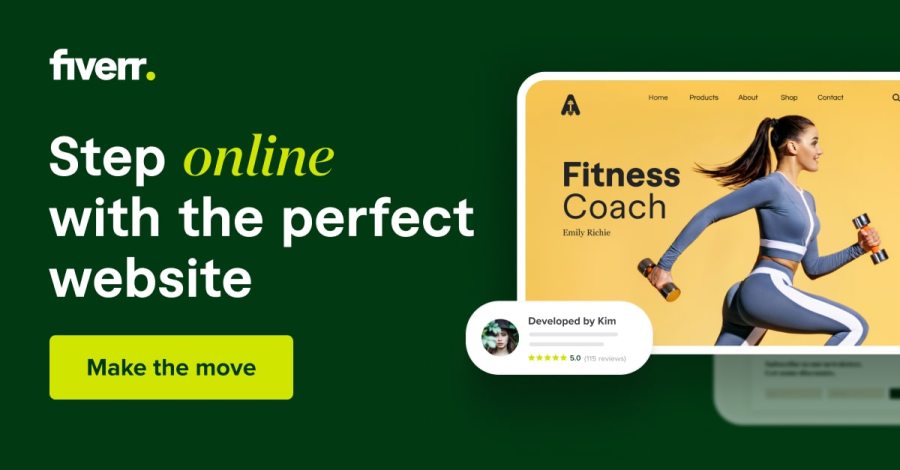Learn how to build profitable affiliate marketing websites for beginners with these step-by-step instructions to launch your first affiliate site.
Are you looking to venture into the world of affiliate marketing and set up your first affiliate website? This can be an exciting and rewarding journey, but it requires careful planning and execution.
Affiliate marketing is a performance-based marketing strategy where businesses reward affiliates for driving traffic and sales to their websites.
Setting up your first affiliate website involves several key steps, from choosing a niche and selecting affiliate programs to creating quality content and driving traffic.
This ultimate guide aims to provide you with a general overview to help you kickstart your affiliate marketing journey successfully. Let’s dive in!
Contents
- How to Build Affiliate Marketing Websites for Beginners
- #1. Choose a Niche
- #2. Market Research
- #3. Domain Name and Hosting
- #4. Install a CMS
- #5. Design Your Affiliate Website
- #6. Create High-Quality, Original Content
- #7. Add Affiliate Links
- #8. Optimize for SEO
- #9. Build an Email List
- #10. Promote Your Website
- #11. Monitor Analytics
- #12. Legal Compliance
- #13. Audit & Update Content
- #14. Scale and Diversify
- Affiliate Marketing Tips
How to Build Affiliate Marketing Websites for Beginners
Setting up affiliate marketing websites involves several key steps. Here’s a general guide to help you get started with your first affiliate website:
#1. Choose a Niche
Choosing the right niches for your affiliate marketing websites is crucial for your success. Here are some actionable tips to help you choose a profitable niche:
- Passion and Interest: Start by brainstorming niches that you are passionate about or have a genuine interest in. This will make it easier for you to create content and engage with your audience.
- Profitability: While passion is important, you also need to consider the profitability of the niche. Research the potential earnings and competition within different niches to find a balance between your interests and profitability.
- Trends and Demand: Look for niches that are currently trending or have a high demand. This can help you tap into a larger audience and increase your chances of success.
- Competition Analysis: Analyze the competition within your chosen niches. Look for niches with moderate competition where you can stand out and establish yourself as an authority.
- Audience Research: Understand your target audience and their needs. Choose a niche that allows you to solve a problem or fulfill a need for your audience.
- Product Availability: Ensure that there are relevant affiliate products available within your niche. Look for affiliate programs that offer high-quality products and good commissions.
- Evergreen vs. Trending: Consider whether you want to focus on evergreen niches that are always in demand or trending niches that have the potential for high short-term earnings.
- Diversification: Consider diversifying your niche selection to cater to different segments of your target audience. This can help you expand your reach and maximize your earnings.
By following these tips, you can choose a niche that aligns with your interests, has the potential for profitability, and allows you to connect with your target audience effectively.
Resources:
- How To Find and Research Your Niche Market
- Target Audience Training: Identify Your Ideal Customer
- How To Find a Profitable Affiliate Marketing Niche
- Creative & Advanced: SEO Keyword Research
- The 9-to-5 Marketer’s Perfect Niche Research System
- Profitable Business Niche: Find An Ideal Business Niche
#2. Market Research
Market research is a crucial step in setting up your affiliate marketing websites. Here are some actionable tips for conducting market research:
- Competitor Analysis: Start by analyzing your competitors within your chosen niche. Identify their strengths, weaknesses, and the strategies they use to attract and engage their audience.
- Target Audience Identification: Clearly define your target audience and create buyer personas to understand their needs, problems, and preferences. This will help you tailor your content and promotions to better resonate with your audience.
- Keyword Research: Use SEO keyword research tools to identify popular search terms and topics within your niche. This will help you create content that is optimized for search engines and attracts organic traffic.
- Social Media Listening: Monitor social media platforms and online forums to listen to conversations related to your niche. This can provide valuable insights into the interests and concerns of your target audience.
- Surveys and Feedback: Conduct surveys and gather feedback from your audience to understand their preferences and pain points. Use this information to improve your offerings and better meet the needs of your audience.
- Trend Analysis: Stay updated with the latest trends and developments within your niche. This will help you identify new opportunities and stay ahead of the competition.
- Evaluate Affiliate Programs: Research and evaluate different affiliate programs within your niche. Look for programs that offer high-quality products, competitive commissions, and reliable tracking and payment systems.
By conducting thorough market research, you can gain valuable insights into your niche and target audience, which will help you create content and promotions that resonate with your audience and increase affiliate conversions.
Resources:
- Target Audience Training: Identify Your Ideal Customer
- How To Find a Profitable Affiliate Marketing Niche
- Creative & Advanced: SEO Keyword Research
- The 9-to-5 Marketer’s Perfect Niche Research System
- Profitable Business Niche: Find An Ideal Business Niche
#3. Domain Name and Hosting
When it comes to your domain name and hosting, here are some actionable tips to help you make the right choices:
- Domain Name Selection: Choose a domain name that is relevant to your niche and easy to remember. Keep it short, simple, and reflective of your brand or niche.
- Keyword Inclusion: Consider including relevant keywords in your domain name to improve your website’s search engine optimization (SEO). However, avoid using exact match keywords that may appear spammy.
- Domain Registrar: Purchase your domain name from a reputable domain registrar like Namecheap. Compare prices and features to find the best registrar for your needs.
- Web Hosting Provider: Choose a reliable web hosting provider that offers fast loading times, excellent uptime, and responsive customer support.
- Hosting Plan Selection: Select a hosting plan that suits your needs and budget. Shared hosting is a cost-effective option for beginners, while dedicated hosting offers more resources and control but at a higher cost.
- SSL Certificate: Ensure that your hosting plan includes an SSL certificate to secure your website and protect user data. This is especially important if you plan to collect any sensitive information from your visitors.
- Backup and Security: Choose a hosting provider that offers regular backups and robust security features to protect your website from cyber threats.
- Scalability: Consider the scalability of your hosting plan, especially if you anticipate growth in traffic and content. Look for hosting providers that offer easy upgrades to higher-tier plans.
By following these tips, you can choose a relevant and memorable domain name for your website and select a reliable hosting provider that meets your needs and budget.
Resources:
#4. Install a CMS
Installing a content management system (CMS) like WordPress is a crucial step in setting up your affiliate marketing websites. Here’s how you can do it:
- Access Your Hosting Account: Log in to your hosting account dashboard. Most hosting providers have a control panel like cPanel or Plesk where you can manage your website.
- Locate the Auto-Installer: Look for an option like “Auto Installer” or “One-Click Installs” in your hosting control panel. This tool allows you to easily install WordPress without needing to manually upload files.
- Select WordPress: Find WordPress in the list of available applications and click on it to start the installation process.
- Configure Your Installation: You’ll be prompted to choose the domain name where you want to install WordPress, as well as the directory (if you want it to be installed in a subdirectory, e.g., yourdomain.com/blog).
- Enter Site Information: Enter your site name, description, and admin username/password. Make sure to choose a strong password for security.
- Complete the Installation: Click on the install button to complete the installation process. Once done, you’ll receive a confirmation message with your WordPress login details.
- Access Your WordPress Dashboard: You can now access your WordPress dashboard and log in using the admin credentials you set during the installation process.
- Customize Your Website: Now that WordPress is installed, you can start customizing your website by choosing a theme, installing plugins, and creating content.
This WordPress for Beginners course will teach anyone to build a functional, beautiful, responsive website with WordPress that looks great on all devices. Follow these steps to install WordPress on your hosting account and start building your affiliate marketing websites.
Resources:
#5. Design Your Affiliate Website
Properly designing your affiliate marketing websites is crucial for attracting and retaining visitors. Here are some actionable tips for designing an affiliate website:
- Choose a Responsive Theme: Select a WordPress theme that is responsive and adapts to different screen sizes. This ensures that your website looks great on desktops, tablets, and smartphones.
- User-Friendly Navigation: Use a simple and intuitive navigation menu to help users easily find the information they’re looking for. Consider using categories and subcategories to organize your content.
- Optimize for Speed: Choose a lightweight WordPress theme that loads quickly. You can also optimize your images and use caching plugins to improve your website’s speed.
- Mobile-Friendly Design: With an increasing number of users accessing websites on mobile devices, it’s essential to have a mobile-friendly design. Ensure that your theme is responsive and provides a good user experience on mobile devices.
- SEO Optimization: Select a theme that is SEO-friendly and optimized for search engines. This includes using clean code, proper heading tags, and SEO-friendly URLs.
- Customization Options: Choose a theme that offers customization options to tailor your website’s design to your brand. This includes customizing colors, fonts, and layouts.
- Content Layout: Use a clean and organized layout for your content. Avoid cluttering your pages with too many elements and focus on providing a clear hierarchy of information.
- Call-to-Action (CTA) Placement: Strategically place CTAs throughout your website to encourage visitors to take action, such as signing up for a newsletter or making a purchase.
By following these tips, you can design clean and user-friendly affiliate marketing websites that provides a great user experience and helps you achieve your affiliate marketing goals.
Resources:
#6. Create High-Quality, Original Content
Creating high-quality, original content is essential for engaging your audience and driving traffic to your affiliate website. Here are some actionable tips for creating great content:
- Understand Your Audience: Before creating content, research your target audience’s needs, preferences, and pain points. This will help you create content that resonates with them.
- Keyword Research: Use keyword research tools to identify relevant keywords and topics within your niche. This will help you optimize your content for search engines and attract organic traffic.
- Provide Value: Focus on providing valuable and informative content that solves a problem or fulfills a need for your audience. This could include how-to guides, product reviews, industry news, and more.
- Be Authentic: Use a consistent and authentic voice in your content. This will help you build trust with your audience and establish yourself as an authority in your niche.
- Use Visuals: Incorporate images, videos, infographics, and other visual elements into your content to make it more engaging and easier to digest.
- Optimize for SEO: Use relevant keywords in your content, headings, and meta tags to optimize it for search engines. This will help your content rank higher in search engine results pages (SERPs).
- Engage with Your Audience: Encourage comments, feedback, and social shares to engage with your audience and build a community around your content.
- Stay Consistent: Consistency is key to building a loyal audience. Create a content calendar and stick to a regular posting schedule to keep your audience engaged.
By following these tips, you can create high-quality, original content that attracts and engages your audience, drives traffic to your affiliate website, and helps you achieve your affiliate marketing goals.
Resources:
- How To Create Original Content from AI-Generated Content
- How To Write High-Quality Blog Posts In 10 Steps
- Best SEO Content Writing Tools to Write SEO Friendly Articles
- SEO Content Writing Tutorial to Write SEO-Optimized Content
#7. Add Affiliate Links
Incorporating affiliate links into your content is a fundamental aspect of affiliate marketing. Here’s how you can do it effectively:
- Sign Up for Affiliate Programs: Research and sign up for reputable and high-converting affiliate programs that are relevant to your niche. Choose programs that offer products or services that align with your audience’s interests and needs.
- Strategic Placement: Insert affiliate links naturally within your content. Place them where they fit contextually and add value to your audience. Avoid overloading your content with too many affiliate links, as this can come across as spammy.
- Use Anchor Text: Instead of using generic anchor text like “click here,” use descriptive anchor text that tells users what to expect when they click the link. This improves the user experience and can increase click-through rates.
- Disclose Your Affiliate Relationships: Be transparent with your audience about your affiliate relationships. Clearly disclose when you’re using affiliate links and explain how they work. This builds trust with your audience and ensures compliance with legal regulations.
- Use Redirects: Consider using redirects, URL shorteners, or affiliate cloaking plugins to cloak your affiliate links, make them more user-friendly, and track clicks and conversions more effectively.
- Track and Optimize: Use tracking tools provided by affiliate programs to monitor the performance of your affiliate links. Analyze the data to optimize your strategy and improve your conversions.
- Update Links Regularly: Keep your affiliate links up to date to ensure they’re directing users to the correct product or offer. Replace outdated links with current ones to avoid frustrating your audience.
- Experiment with Different Strategies: Test different strategies for incorporating affiliate links, such as text links, banner ads, and product recommendations. Monitor the results to see what works best for your audience.
By following these tips, you can effectively incorporate affiliate links into your content, provide value to your audience, and generate revenue through affiliate marketing.
Resources:
#8. Optimize for SEO
Optimizing your affiliate marketing websites for search engines (SEO) is crucial for attracting organic traffic. Here are some actionable tips to improve your website’s visibility:
- Keyword Research: Use keyword research tools to identify relevant keywords and phrases related to your niche. Use these keywords strategically in your content, headings, meta tags, and URLs.
- On-Page Optimization: Optimize your content for search engines by using relevant keywords in your titles, headings, and throughout your content. Ensure your content is well-structured and easy to read.
- Meta Tags: Use descriptive and compelling meta titles and meta descriptions for your pages and posts. This helps search engines understand the content of your website and can improve click-through rates.
- Quality Content: Create high-quality, informative, and shareable content that provides value to your audience. This not only improves your website’s SEO but also helps attract and retain visitors.
- Internal Linking: Use internal linking to connect related content within your website. This helps search engines crawl and index your content more effectively and can improve the user experience.
- Mobile-Friendliness: Ensure your website is mobile-friendly, as mobile usability is an important ranking factor for search engines.
- Page Speed: Improve your website’s loading speed by optimizing images, using caching plugins, and choosing a reliable hosting provider. A faster website is more likely to rank higher in search results.
- Off-Page SEO: Build high-quality backlinks from reputable websites to improve your website’s authority and ranking. This can be done through guest posting, social media promotion, and outreach to influencers.
- Monitor and Analyze: Use tools like Google Analytics and Google Search Console to monitor your website’s performance and identify areas for improvement. Adjust your SEO strategy based on the data to achieve better results.
By implementing these SEO strategies, you can improve your website’s visibility on search engines, attract more organic traffic, and increase your chances of success with affiliate marketing.
Resources:
- 21 SEO Tips for Blogs: Bloggers SEO for Beginners Checklist
- How To Outsource SEO Services to an SEO Specialist
#9. Build an Email List
Building an email list is a valuable strategy for affiliate marketers to engage with their audience and promote affiliate products. Here’s how you can do it:
- Choose an Email Marketing Service: Sign up for an email marketing service like ConvertKit. These platforms offer tools to manage your email list, create campaigns, and track results.
- Create an Opt-In Form: Place opt-in forms on your website to collect email addresses from visitors. Offer incentives, such as free guides, e-books, or exclusive content, to encourage sign-ups.
- Segment Your List: Segment your email list based on subscriber interests, demographics, or behavior. This allows you to send targeted and relevant content to different segments of your audience.
- Send Valuable Content: Regularly send valuable content to your subscribers, such as helpful tips, product recommendations, and exclusive offers. This helps build trust and keep your audience engaged.
- Promote Affiliate Products: Occasionally promote affiliate products to your email list, but be careful not to overdo it. Provide genuine recommendations and focus on products that align with your audience’s interests and needs.
- Track and Analyze: Use email marketing analytics to track the performance of your campaigns. Monitor open rates, click-through rates, and conversions to optimize your email marketing strategy.
- Engage with Subscribers: Encourage feedback and engagement from your subscribers. Respond to their questions and comments to build a relationship and improve loyalty.
- Comply with Regulations: Ensure compliance with email marketing regulations, such as GDPR and CAN-SPAM, by providing clear opt-in and opt-out options and honoring unsubscribe requests promptly.
By building an email list and engaging with your subscribers effectively, you can nurture relationships, promote affiliate products, and drive revenue for your affiliate marketing business.
Resources:
- Join ConvertKit’s Free Grow Your Audience Challenge
- How To Do Email Marketing Without Breaking the Bank
#10. Promote Your Website
Promoting your affiliate marketing websites is crucial for driving traffic and increasing visibility. Here are some actionable blog marketing tips for promoting your affiliate website:
- Social Media Marketing: Share your content on popular social media platforms like Facebook, Twitter, Instagram, and LinkedIn. Use engaging visuals and compelling captions to attract attention.
- Online Communities: Join relevant online communities, forums, and groups related to your niche. Participate in discussions, answer questions, and share your content where appropriate.
- Guest Blogging: Write guest posts for other blogs in your niche. This can help you reach a new audience and drive traffic back to your website.
- Influencer Partnerships: Collaborate with influencers in your niche to promote your website and affiliate products. This can help you reach a larger audience and build credibility.
- Email Marketing: Use your email list to promote your content and affiliate products. Send regular newsletters with valuable information and promotions.
- SEO: Continue to optimize your content for search engines to improve your website’s visibility and attract organic traffic.
- Paid Advertising: Consider using paid advertising, such as Google Ads or social media ads, to promote your website and drive targeted traffic.
- Engage with Your Audience: Respond to comments, messages, and feedback from your audience. Encourage sharing and word-of-mouth promotion.
By promoting your website through various channels and engaging with your audience, you can increase visibility, drive traffic, and ultimately, boost your affiliate marketing efforts.
Resources:
- Best Pinterest Bloggers Courses
- 45+ Blog Marketing & Promotion Tips
- How To Increase Website Traffic WITHOUT Creating New Content
#11. Monitor Analytics
Monitoring analytics is essential for understanding how your affiliate marketing websites are performing and making informed decisions to improve their effectiveness. Here’s how you can do it:
- Set Up Google Analytics: Install Google Analytics on your website to track important metrics such as traffic sources, user behavior, and conversion rates. Follow Google’s instructions to set up the tracking code on your website.
- Monitor Traffic Sources: Analyze where your traffic is coming from, whether it’s organic search, social media, referrals, or direct traffic. This can help you identify which channels are most effective in driving traffic to your website.
- Track User Behavior: Monitor user behavior on your website, such as page views, time spent on the site, bounce rate, and affiliate conversion rates. This can help you understand how users are interacting with your content and identify areas for improvement.
- Set Up Goals: Set up goals in Google Analytics to track specific actions that you want users to take on your website, such as signing up for a newsletter or making a purchase. This can help you measure the effectiveness of your affiliate marketing efforts.
- Analyze Conversion Rates: Track affiliate conversion rates to see how many visitors are completing your desired actions. Identify factors that may be affecting your conversion rates and make adjustments to improve them.
- Segment Your Data: Use Google Analytics to segment your data based on various criteria, such as demographics, traffic sources, or device types. This can provide valuable insights into your audience and help you tailor your content and marketing strategies accordingly.
- Make Data-Driven Decisions: Use the data from your analytics to make informed decisions about your website and affiliate marketing strategies. Adjust your strategies based on the data to improve performance and achieve your goals.
By monitoring analytics regularly and using the insights gained to optimize your website and marketing strategies, you can improve the effectiveness of your affiliate marketing efforts and achieve better results.
Resources:
- The Ultimate Google Analytics Course for Beginners
- Conversion Rate Optimization: Convert Visitors Into Buyers
- How To Increase Affiliate Conversion Rates
#12. Legal Compliance
Ensuring legal compliance is essential for running an affiliate marketing website. Here are some key legal requirements to consider:
- Privacy Policy: Create a privacy policy that outlines how you collect, use, and protect personal information from your website visitors. This is especially important if you collect any personal data through forms or cookies.
- Affiliate Disclosure: Disclose your affiliate relationships clearly and conspicuously on your website. This helps maintain transparency with your audience and ensures compliance with regulations such as the FTC’s guidelines in the United States.
- Terms of Service: Draft terms of service that govern the use of your website. This should include rules for user behavior, intellectual property rights, and disclaimers of liability.
- GDPR Compliance: If your website is accessible to users in the European Union, ensure compliance with the General Data Protection Regulation (GDPR). This includes obtaining consent before collecting personal data and providing users with the right to access, correct, or delete their data.
- Cookie Consent: If your website uses cookies, obtain consent from users before placing cookies on their devices. Provide information about the types of cookies used and their purposes.
- CAN-SPAM Compliance: If you send marketing emails, ensure compliance with the Controlling the Assault of Non-Solicited Pornography and Marketing (CAN-SPAM) Act. This includes providing a way for recipients to opt out of receiving emails from you.
- Accessibility: Ensure that your website is accessible to individuals with disabilities, in compliance with the Web Content Accessibility Guidelines (WCAG).
- Copyright Compliance: Respect copyright laws by obtaining permission to use copyrighted material and attributing content to its original source when necessary.
By ensuring compliance with these legal requirements, you can protect your website from legal issues and build trust with your audience. Consider consulting with a legal professional to ensure that your website complies with all relevant laws and regulations.
Resources:
- Legal Bundle for Blogs & Websites
- Business-in-a-Box Templates
- iubenda’s Privacy Controls and Cookie Solution
- 5 Blog Laws & Legal Considerations for Bloggers
#13. Audit & Update Content
Regularly updating your content is crucial for maintaining the relevance and authority of your website. Here are some actionable tips for keeping your content fresh and engaging:
- Regular Content Audits: Conduct regular content audits to evaluate the performance and relevance of your existing content. Identify outdated or underperforming content that needs updating or removal. This helps ensure that your website remains current and valuable to your audience.
- Update Existing Content: Periodically review and update your existing content to ensure that it remains accurate and relevant. This could include updating statistics, adding new information, or refreshing the writing style.
- Create New Content: Continuously create new content to keep your website active and attract new visitors. This could include blog posts, videos, infographics, or podcasts.
- Follow Trends: Stay informed about trends and developments in your niche. Create content that addresses current topics and interests within your industry.
- Engage with Your Audience: Encourage feedback and interaction from your audience. Respond to comments, emails, and social media messages to keep the conversation going.
- Optimize for SEO: Continuously optimize your content for search engines by using relevant keywords, meta tags, and internal linking strategies.
- Share Updates: Promote your updated and new content on social media and other channels to attract more visitors to your website.
- Monitor Performance: Use analytics tools to monitor the performance of your content. Identify top-performing content and replicate its success in future updates.
- Plan Ahead: Create a content calendar to plan your updates and ensure a consistent posting schedule. This can help you stay organized and avoid last-minute rushes.
By regularly updating your content, you can improve your search engine rankings, keep your audience engaged, and establish your website as a valuable resource in your niche.
Resources:
#14. Scale and Diversify
As your affiliate marketing websites grow, it’s important to scale and diversify your income sources. Here are some actionable tips to consider:
- Explore New Affiliate Programs: Look for new affiliate programs that align with your niche and audience. Consider promoting a variety of products and services to diversify your income streams.
- Expand Your Content: Create new types of content, such as videos, podcasts, or webinars, to attract a wider audience. This can help you reach new demographics and increase your earning potential.
- Optimize Existing Revenue Streams: Continuously optimize your existing affiliate marketing strategies to improve conversion rates and maximize earnings. This could include refining your content, testing different affiliate offers, and analyzing performance data.
- Consider Other Monetization Methods: Explore other ways to monetize your affiliate marketing websites, such as sponsored content, display advertising, or selling digital products. Diversifying your income sources can help stabilize your revenue stream.
- Build Relationships with Brands: Foster relationships with brands and affiliate partners to secure exclusive deals and promotions. This can help you negotiate higher commissions and access exclusive offers for your audience.
- Monitor Industry Trends: Stay informed about industry trends and changes in consumer behavior. This can help you identify new growth opportunities and adapt your strategies accordingly.
- Invest in Your Business: Consider investing in tools, resources, and services that can help you scale your affiliate business. This could include outsourcing tasks, upgrading your website infrastructure, or investing in advertising campaigns.
By scaling and diversifying your affiliate marketing websites, you can maximize your earning potential and build a sustainable and profitable business over time.
Resources:
- Earn Money from Blogs: Best Blogging Ideas That Make Money
- How To Build Profitable Affiliate Websites with Super-Affiliate Russell Lobo
Remember that success in affiliate marketing takes time and effort. Stay patient, continuously learn, and adapt your strategies based on the performance of your website.
Affiliate Marketing Tips
- How to start an affiliate marketing business
- How to increase affiliate conversion rates
- How to build affiliate websites with super-affiliate Russell Lobo
- 10 affiliate income tips to boost your affiliate marketing earnings
- 10 common affiliate marketing mistakes to avoid
- 10 steps to affiliate marketing success
- How do famous bloggers make money blogging?
- Earn money from blogs: 10 blog ideas that make money
© 2024, Priya Florence Shah. All rights reserved.
Priya Florence Shah is a bestselling author and an award-winning blogger. Check out Devi2Diva, her book on emotional self-care for women. In her spare time, Priya writes science-fiction novels and poetry and chills with her two-legged and four-legged kids.
Discover more from Business & Branding Tips
Subscribe to get the latest posts sent to your email.



















